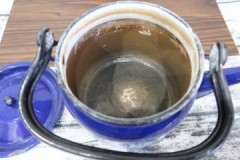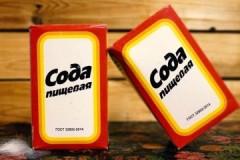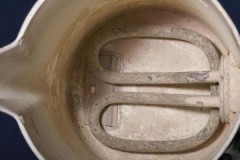Several effective ways to remove limescale in a kettle with vinegar
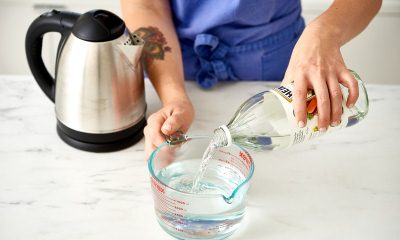 Hard water is harmful not only to human health, but also to household appliances. Because of it, a thick layer of scale forms on the walls of the kettle.
Hard water is harmful not only to human health, but also to household appliances. Because of it, a thick layer of scale forms on the walls of the kettle.
You cannot ignore the problem. Table vinegar helps to cope with plaque.
How to do it right descale the kettle vinegar, read the article.
Content
Can I use acetic acid for cleaning?
For descaling, table vinegar or essence is often used. They have different acid concentrations, so they need to be dosed correctly. You can clean the device with vinegar, but only strictly following the instructions.
Gas evolution occurs, due to which the salts are destroyed. In this case, the surface of the device itself does not suffer.
How to remove limescale at home?
To get rid of a thick layer of limescale, the following procedure must be followed:
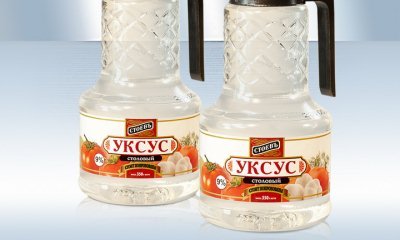 Collect cold water in a bowl.
Collect cold water in a bowl.- Add table vinegar to it. 1 liter will require 100 ml of acid. If essence is used, then 1 tablespoon is taken for 1 liter.
- Put the kettle on the stove or plug it in.
- Bring the solution to a boil and leave for 3 hours to act.
- After the specified time has elapsed, the softened scale must be cleaned off with the back of the sponge.
- Rinse the kettle several times to completely remove any vinegar residue. For greater reliability, you can boil clean water in it and drain it.
If the layer of limescale is small, then the water may not be brought to a boil. In this case, proceed as follows:
- 1 liter of warm water is poured into a kettle;
- add 100 ml of table vinegar to it;
- leave the composition overnight;
- in the morning, clean the inner walls with a soft brush and rinse several times with clean water.
Preventive cleaning is carried out in the same way.
How to descale a kettle with vinegar, video instruction:
How can you diversify the recipe?
Acetic acid recipe can be supplemented with other means. This will increase the effectiveness of the procedure:
-
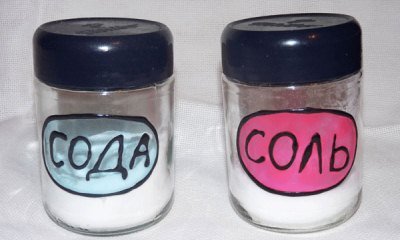 Vitamin C... For 2 liters of water, you will need two tablespoons of essence and two tablespoons of powdered acid. The solution is boiled and left to act for 12 hours.
Vitamin C... For 2 liters of water, you will need two tablespoons of essence and two tablespoons of powdered acid. The solution is boiled and left to act for 12 hours.This is a very effective recipe that does not require descaling. The salt deposits will self-dissolve in the water. All that remains is to thoroughly rinse the kettle.
- Baking soda... Reacting with vinegar, it enhances its effect. Read more here.
- Salt. For 1 liter of water, take one tablespoon of table salt.
How often should you clean?
The kettle should be cleaned at least once a month. If the tap water is hard, then the procedure is carried out once every 2 weeks. Thanks to this frequency, it is possible to keep the device clean, which will have a positive effect on its service life.
Even if a more frequent struggle with scale is required, you should not worry about this. Vinegar does not harm the walls of the device, does not reduce its service life.
Alternative options
In addition to vinegar, you can cope with scale in the kettle using other available tools. In this regard, substances such as:
- soda,
- lemon acid,
- carbonated drinks.
If you do not want to use folk recipes, you can purchase specialized formulations that are sold in stores in the departments with household chemicals or in online stores.
How to cleanse with folk remedies?
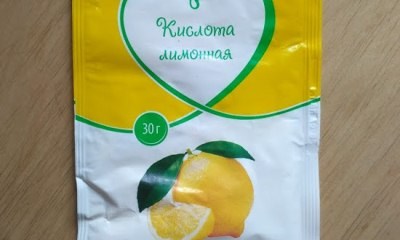 Soda. For a 3 liter teapot, you need 3 tablespoons of baking soda. The container is filled to 2/3, the solution is brought to a boil and left for 5 hours. After that, the limescale is rubbed with a soft brush, and the container is rinsed with warm water.
Soda. For a 3 liter teapot, you need 3 tablespoons of baking soda. The container is filled to 2/3, the solution is brought to a boil and left for 5 hours. After that, the limescale is rubbed with a soft brush, and the container is rinsed with warm water.- Lemon acid... It acts like table vinegar, but is less aggressive than the essence. To remove limescale from a three-liter teapot, you need 30 to 60 g of acid.
The thicker the layer, the more powder is used. The kettle is half full, the required amount of citric acid is poured into it and the solution is brought to a boil. When the composition cools down, it is drained, and the loose scale is brushed off.
- Sparkling water... For descaling, you can use Coca-Cola, Fanta or Sprite. If the teapot is plastic, then colorless drinks are preferred. Soda water is poured into a container, filling it by 2/3. Bring the solution to a boil, turn off the gas, wait until the liquid cools down and pour it into the sink. As a rule, there is no need to use a brush after treatment with sparkling water. The substances contained in the drink dissolve all limescale without a trace.
How to remove deposits with household chemicals?
Stores sell specialized descaling compounds. The most effective remedies:
- Top House: descaler for kettles and coffee makers. 1 liter of clean water is poured into the device, bring it to a boil and turn off the gas. 60 ml of solution is injected into boiling water, left for 30 minutes to act. After the specified time has elapsed, it remains only to drain the dirty water and rinse the container several times. The cost of 500 ml of solution is 250 rubles.
- Topper tablets from limescale for teapots and coffee makers. To remove salt deposits, water is poured into the device, one tablet is thrown and the liquid is brought to a boil. When it cools down, it is drained and the kettle is thoroughly washed. The cost of two tablets is 90 rubles.
- Melitta anti calc descaler for teapots. To remove salt deposits in 1 liter of water, use 100 ml of solution. The liquid is poured into a kettle and brought to a boil, when it cools down, it is drained. The cost of 250 ml of solution is 365 rubles.
Features for different types of teapots
Metal, glass and plastic teapots are not afraid of contact with vinegar. However, there are certain cleaning rules that should not be violated:
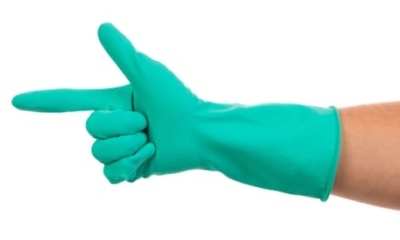 You cannot use essence to remove limescale deposits from a plastic kettle. It contains too high a concentration of acid, so improper use may damage the device.
You cannot use essence to remove limescale deposits from a plastic kettle. It contains too high a concentration of acid, so improper use may damage the device.- To cope with scale on glass teapots, do not use hard metal brushes. They leave behind many small scratches, on which calcium salts will settle in the future.
- Stainless steel kettles are not afraid of contact with acids, their inner surface can be cleaned with a stiff brush, but in no case use sharp devices, such as a knife.
- Do not use a combination of baking soda and vinegar to clean electrical appliances. This recipe is only suitable for descaling conventional kettles.
- It is not recommended to handle enamel teapots with vinegar, as they are afraid of the effects of acids. If the house has such a device, it is better to use a colorless carbonated drink.
Helpful information
When descaling you should adhere to the following recommendations:
- when descaling with vinegar, the windows must be kept open, there must be good ventilation in the room, since when the acid evaporates, it emits a pungent odor;
- to remove a small layer of scale, use table vinegar with a concentration of 9%;
- to fight old plaque, it is better to resort to the help of essences;
- when the kettle boils, you cannot bend over it, because vapors can burn the respiratory system.
You can find useful and important information on how to descale here.
Conclusion
Vinegar is a proven remedy for kettle limescale. If the plaque is small, then the effect will be achieved the first time. In advanced cases, you can use the essence, or professional cleaners.

